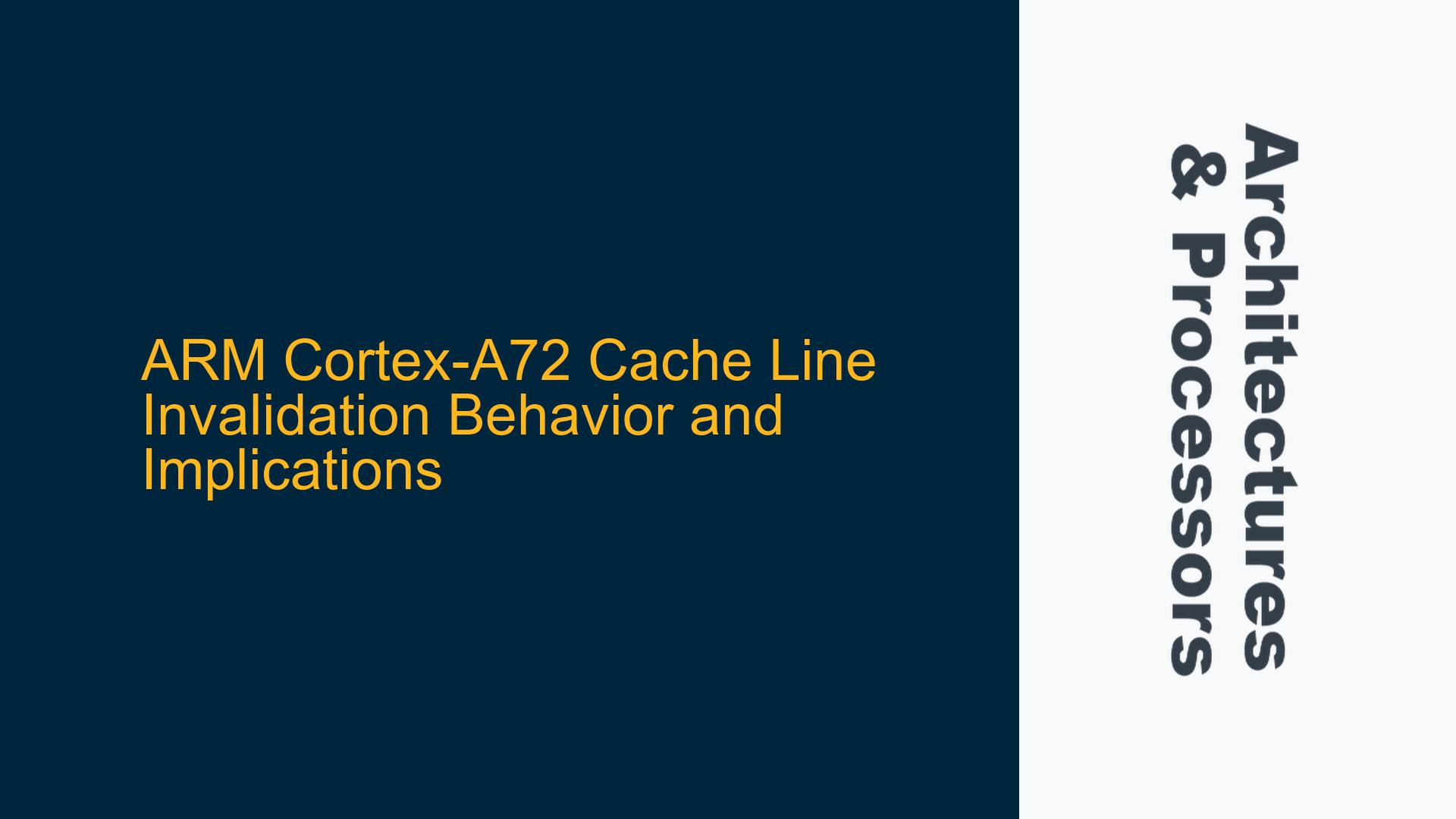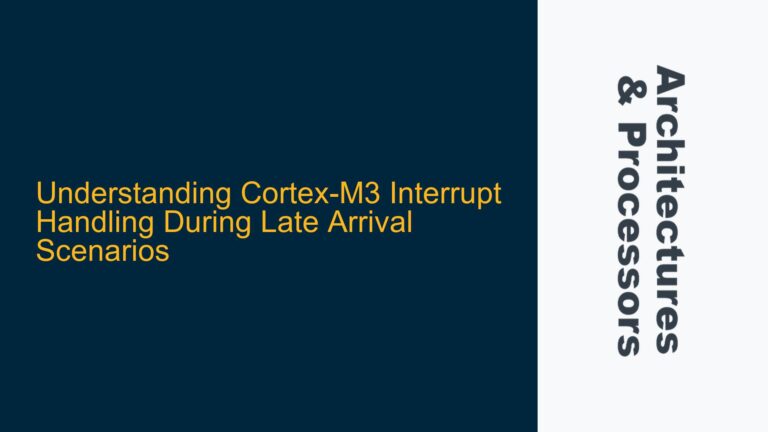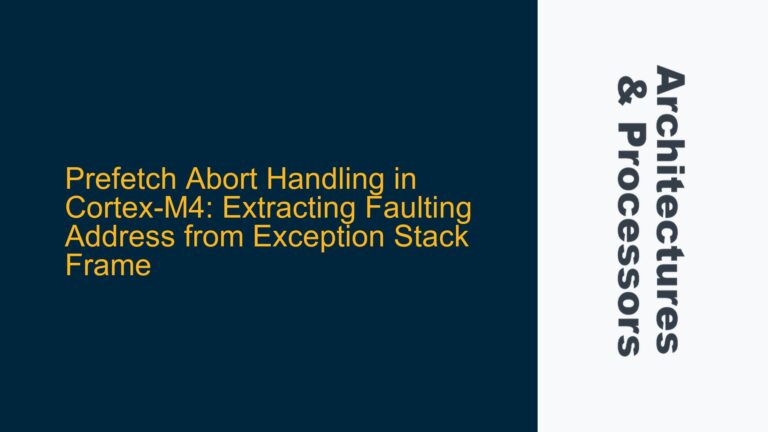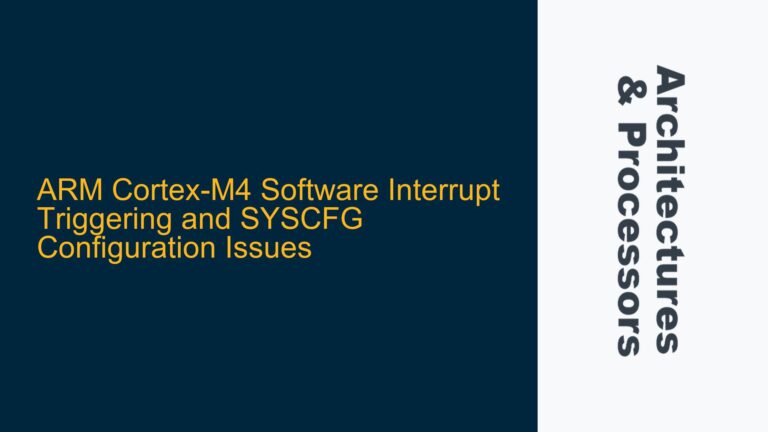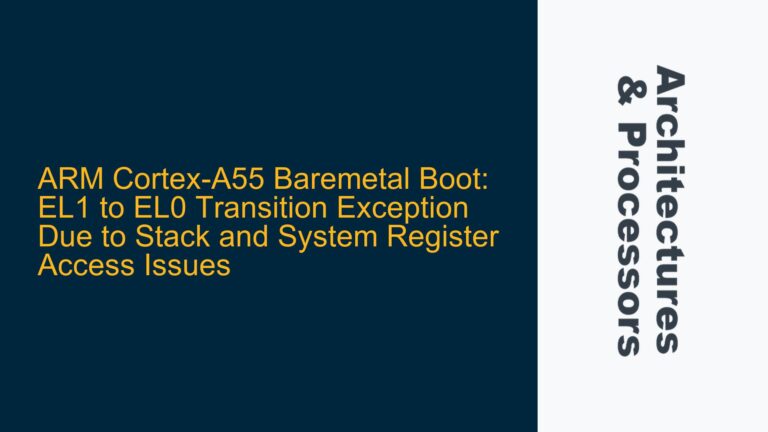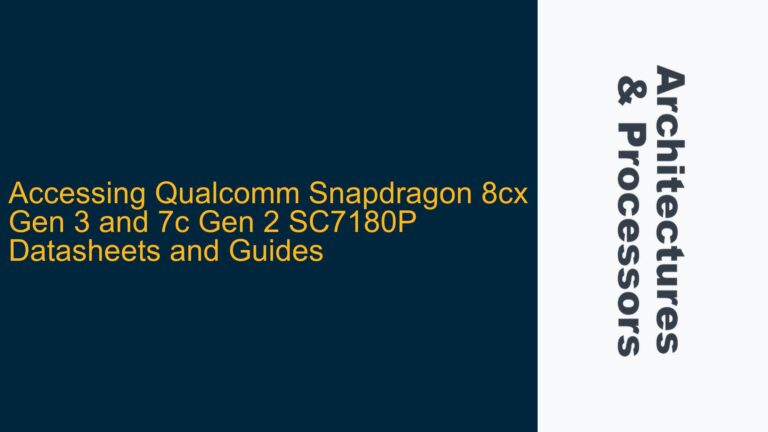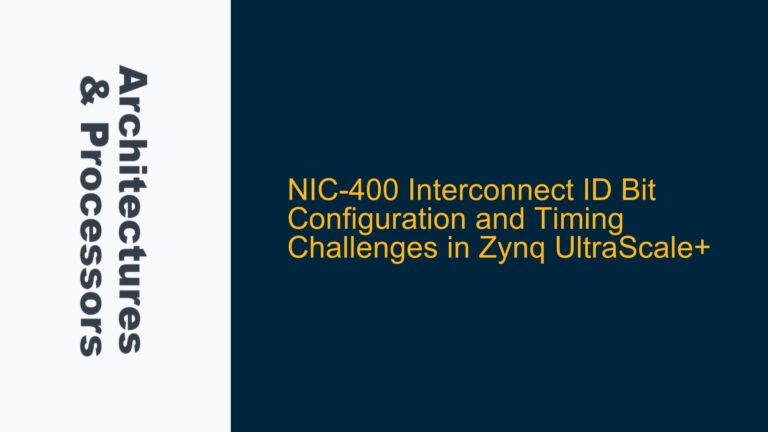ARM Cortex-A72 Cache Line Invalidation Behavior During DC IVAC Operation
The ARM Cortex-A72 processor, like other ARM Cortex-A series processors, employs a sophisticated cache management system to optimize memory access and ensure data consistency. One of the critical operations in cache management is the invalidation of cache lines, particularly when dealing with dirty cache lines. The DC IVAC (Data Cache Invalidate by Virtual Address to PoC) instruction is a fundamental operation used to invalidate cache lines. However, the behavior of this instruction, especially concerning dirty cache lines, is nuanced and requires a deep understanding of the ARM architecture.
In the ARM Cortex-A72, the DC IVAC instruction is designed to invalidate a cache line by its virtual address. When a cache line is dirty, meaning it contains modified data that has not yet been written back to main memory, the behavior of the DC IVAC instruction becomes more complex. Specifically, the ARM Cortex-A72 may perform an implicit clean operation before invalidating the cache line, ensuring that any modified data is written back to memory before the line is invalidated. This behavior is crucial for maintaining data consistency but can have performance implications, particularly in scenarios where cache line invalidation is frequent.
The ARM Architecture Reference Manual (ARM ARM) provides detailed information on the behavior of the DC IVAC instruction. According to the manual, when the DC IVAC instruction is executed at Exception Level 1 (EL1), it performs a clean and invalidate operation, effectively behaving like a DC CIVAC (Data Cache Clean and Invalidate by Virtual Address to PoC) instruction under certain conditions. These conditions include the implementation and enabling of Exception Level 2 (EL2) in the current security state and the enabling of stage two address translation via the HCR_EL2.VM bit.
This behavior implies that, in most practical scenarios, it is impossible to invalidate a dirty cache line without first cleaning it. The automatic clean operation ensures that any modified data in the cache line is written back to memory, preventing data loss or corruption. However, this automatic clean operation can introduce additional latency, particularly in systems where cache line invalidation is a frequent operation. Understanding this behavior is essential for optimizing performance in ARM Cortex-A72-based systems, particularly in scenarios where cache management is critical.
Memory Hierarchy and Cache Coherency in ARM Cortex-A72
The ARM Cortex-A72 processor features a multi-level cache hierarchy, typically including L1 and L2 caches, to optimize memory access latency and bandwidth. The L1 cache is split into separate instruction and data caches, while the L2 cache is unified, storing both instructions and data. This hierarchical cache structure is designed to reduce the average memory access time by keeping frequently accessed data closer to the processor cores.
Cache coherency is a critical aspect of the ARM Cortex-A72’s memory hierarchy. The processor employs a cache coherency protocol, typically based on the MOESI (Modified, Owned, Exclusive, Shared, Invalid) model, to ensure that all cores in a multi-core system have a consistent view of memory. The MOESI protocol allows multiple cores to share data efficiently while minimizing the need for expensive memory accesses.
In the context of cache line invalidation, the MOESI protocol plays a crucial role in maintaining data consistency. When a cache line is invalidated, the protocol ensures that any modified data in the cache line is written back to memory before the line is invalidated. This process is essential for preventing data loss or corruption, particularly in multi-core systems where multiple cores may be accessing the same memory locations.
The DC IVAC instruction interacts with the cache coherency protocol to ensure that cache line invalidation is performed correctly. When a DC IVAC instruction is executed, the processor first checks the state of the cache line. If the cache line is dirty, the processor performs a clean operation, writing the modified data back to memory, before invalidating the cache line. This behavior ensures that the cache coherency protocol is maintained, even in complex multi-core systems.
Understanding the interaction between the DC IVAC instruction and the cache coherency protocol is essential for optimizing performance in ARM Cortex-A72-based systems. In particular, developers must be aware of the potential performance implications of frequent cache line invalidation, particularly in systems where cache coherency is critical. By carefully managing cache line invalidation, developers can minimize the performance impact of cache management operations while ensuring data consistency.
Implementing Cache Management Strategies for ARM Cortex-A72
Effective cache management is critical for optimizing performance in ARM Cortex-A72-based systems. The DC IVAC instruction is a powerful tool for managing cache lines, but its behavior, particularly concerning dirty cache lines, must be carefully considered to avoid performance bottlenecks.
One strategy for optimizing cache management is to minimize the frequency of cache line invalidation. In many cases, it is possible to avoid invalidating cache lines by carefully managing data access patterns. For example, by aligning data structures to cache line boundaries and minimizing the number of cache lines touched by a given operation, developers can reduce the need for cache line invalidation.
Another strategy is to use the DC CIVAC instruction instead of the DC IVAC instruction when a clean operation is explicitly required. The DC CIVAC instruction performs both a clean and invalidate operation, ensuring that any modified data in the cache line is written back to memory before the line is invalidated. By using the DC CIVAC instruction in scenarios where a clean operation is explicitly required, developers can avoid the implicit clean operation performed by the DC IVAC instruction, potentially reducing latency.
In multi-core systems, cache management strategies must also consider the impact of cache coherency protocols. In particular, developers must be aware of the potential for cache line invalidation to trigger expensive cache coherency operations, particularly in systems with a high degree of data sharing between cores. By carefully managing data access patterns and minimizing the need for cache line invalidation, developers can reduce the performance impact of cache coherency operations.
Finally, developers should consider the use of cache maintenance operations at the appropriate exception levels. In particular, the behavior of the DC IVAC instruction can vary depending on the exception level at which it is executed. By carefully managing exception levels and ensuring that cache maintenance operations are performed at the appropriate level, developers can optimize cache management and minimize the performance impact of cache line invalidation.
In conclusion, the behavior of the DC IVAC instruction in the ARM Cortex-A72 processor is complex and requires a deep understanding of the ARM architecture and cache management strategies. By carefully managing cache line invalidation and considering the impact of cache coherency protocols, developers can optimize performance in ARM Cortex-A72-based systems while ensuring data consistency.
